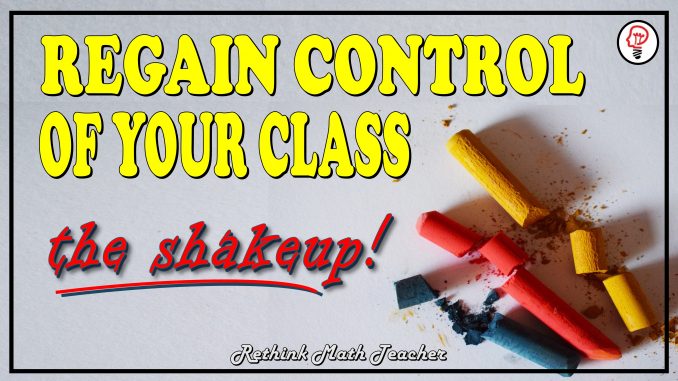
I once had a class that was constantly talking when they weren’t supposed to. I would be teaching, they would talk. They were supposed to do an assignment, but they would talk. I’d get them quite, and within a few minutes… they were talking!
To make matters worse, I was floating – which meant that every period I was in a different teacher’s classroom while that teacher was on his/her planning period. So another teacher was in the back of the room watching me struggle with my exceptionally chatty class – which was quite embarrassing for me.
The class was always a chatty one, but on the day I am referencing, they were especially chatty, and it had gone on long enough!
They were in the middle of completing their assignment, and were talking up a storm despite my best efforts to silence them, when I told them all to stop working, put their pencils down, and come with me.
I escorted the class outside and asked them to huddle around me.

Click here
Now you need to know a few things.
One, it’s not like my classes never have opportunities to talk. This class was actually titled ‘research,’ which entailed a lot of group projects and project based learning – so there was time to talk, but there was also time to not talk.
Two, I hadn’t yelled at them. Though they were chatty, and I had asked several times for them to stop talking, I hadn’t yelled at them. And I rarely do yell at students or classes, I don’t think it’s helpful.
Third, and finally, I had a good report with these students. I genuinely liked them, and cared for them. And they knew this, and generally liked me as well. So their chattiness wasn’t malicious, it was just that they were a chatty group of students and were having a hard time controlling themselves. But it was frustrating! And, as I said, embarrassing.

When we got outside, and huddled up, I started by being quite, and just letting the quietness of the moment sink in for a moment.
As we were walking out there, several students had asked, “Are we in trouble.” The change of scenery and the abrupt change of classroom norms had disrupted their routine and caused them to pay attention. And now the silence I had pushed upon them was palpable. I had their attention.
I explained to them that I was getting frustrated because I had asked them to stop talking and do their work several times, and they kept returning to their chattiness. After explaining the problem, I reminded them that I cared about them, and I wasn’t mad, but I was frustrated and feeling very disrespected, and I would appreciate it, if they would behave according to the classroom expectations which I again laid out.
After our heart-to-heart (during which I did not yell, but did share my frustration) we went back to class and got on task. The rest of the day was phenomenal! They behaved exceptionally well, which I complimented them on in great length before the period ended.
Linda Kardamis, of Teach 4 the Heart, has a comprehensive online course on classroom management which is phenomenal. In her training, she talks about using this strategy to regain control of a class, which she calls the ‘classroom shake-up.’ She says that a classroom shake-up is something that disrupts their routine, which will get their attention. So if students are always misbehaving at the spot that they put their homework in when they enter the room, get rid of that spot so that students are disrupted from their normal routine. For me, I disrupted the regular routine by leaving everything behind and walking them outside. They were clearly disrupted, and it gave me their full attention.
After shaking things up, you will have their attention, and can use this moment as a transition to reestablish your policies and procedures and get your class back on the right track. I do not recommend doing a shake-up like the one I did, or the one Linda recommends without having a clear classroom management plan in place – policies and procedures, expectations, and a plan of action for misbehavior.
You can learn more about Classroom Management 101 from Teach 4 the Heart by clicking here.
For more great classroom resources, click here.


